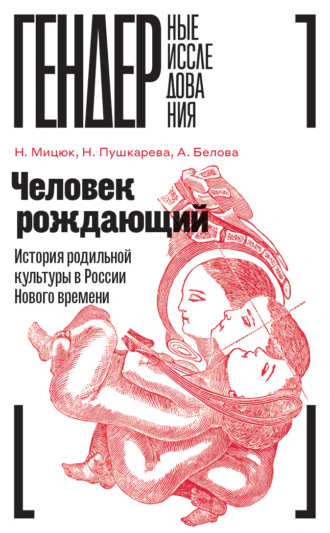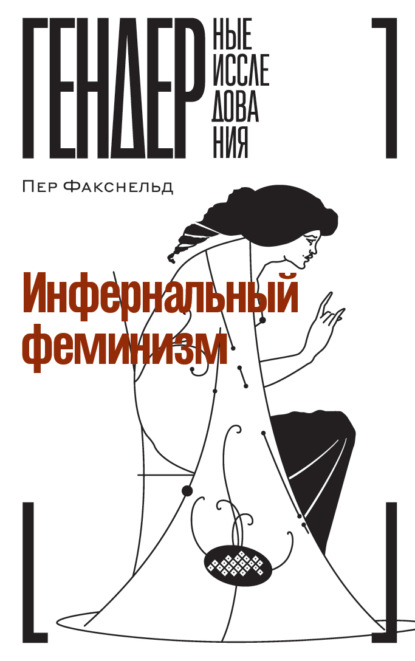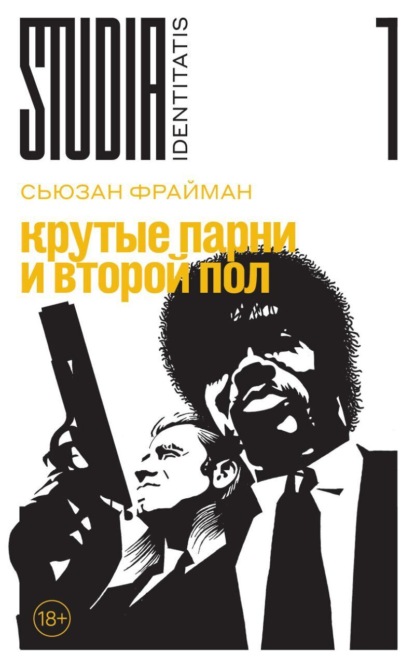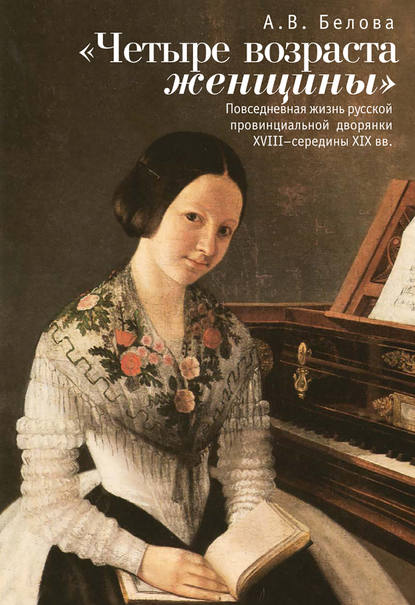
Полная версия
Человек рождающий. История родильной культуры в России Нового времени
Конец ознакомительного фрагмента.
Текст предоставлен ООО «Литрес».
Прочитайте эту книгу целиком, купив полную легальную версию на Литрес.
Безопасно оплатить книгу можно банковской картой Visa, MasterCard, Maestro, со счета мобильного телефона, с платежного терминала, в салоне МТС или Связной, через PayPal, WebMoney, Яндекс.Деньги, QIWI Кошелек, бонусными картами или другим удобным Вам способом.
Сноски
1
Родины, дети, повитухи в традициях народной культуры / Сост. Е. А. Белоусова. М.: РГГУ, 2001.
2
Данилишина Е. И. Основные этапы и направления развития отечественного акушерства (XVIII–XX вв.): Автореф. дис. … д-ра мед. наук. М., 1998; Зимин И. В. Женское медицинское образование в России (вторая половина XVIII – начало XX вв.): Дис. … канд. ист. наук. СПб., 1999; Яковенко Т. Г. Охрана материнства и младенчества во второй половине XVIII – нач. XX в.: На материалах Санкт-Петербурга: Дис. … канд. ист. наук. СПб., 2008.
3
Dye N. S. History of Childbirth in America // Signs. 1980. Vol. 6 (1). P. 97–101; Diepgen P. Frau und Frauenheilkunde in der Kultur des Mittelalters. Stuttgart: Georg Thieme Verlag, 1963.
4
Radcliffe W. Milestones in Midwifery. Bristol: J. Wright & Sons, 1967; Rößlein E. Der Swangern Frauwen und hebammen Rosegarten. Zürich: Faksimile. 1976; Brackert H. «Unglückliche, was hast du gehofft?» Zu den Hexenbüchern des 15. bis 17. Jahrhunderts // Gabriele B. u. a. Aus der Zeit der Verzweiflung – Zur Genese und Aktualität des Hexenbildes. Frankfurt am Main 1977. S. 131–187; Coulon-Arpin M. La maternité et les sages-femmes, de la Préhistoire au XX siècle. Paris: R. Dacosta, 1981.
5
Михель Д. В. Социальная история медицины: становление и проблематика // Журнал исследований социальной политики. 2009. Т. 7. № 3. С. 295–313.
6
Ginsburg F., Rapp R. The Politics of Reproduction // Annual Review of Anthropology. 1991. № 20. P. 311–344.
7
Холизм (от др.-греч. ὅλος – целый) – представление, согласно которому оценка возможна лишь в составе целой, полной системы.
8
Jordan B. Birth in Four Cultures: A Cross-cultural Investigation of Childbirth in Yucatan, Holland, Sweden and the United States. Montreal: Eden Press Women’s Publications. 1978.
9
Jordan B. Authoritative Knowledge and Its Construction // Childbirth and Authoritative Knowledge: Cross-Cultural Perspectives. Berkeley; Los Angeles; London, 1997.
10
Kitzinger S. The Complete Book of Pregnancy and Childbirth Dorling Kindersley. New York: Alfred A. Knopf, 1982; Kitzinger S. A Celebration of Birth: The Experience of Childbirth. Penguin, 1984; Lozoff B. Birth and «bonding» in non-industrial societies // Developmental Medicine and Child Neurology. Vol. 25. Р. 595–600; Martin Em. The Woman in the Body: A cultural analysis of reproduction. Boston: Beacon Press, 1987.
11
Lyons A. S., Petrucelli R. J. Die Geschichte der Medizin im Spiegel der Kunst. Köln: DuMont Verlag, 1980; Kammeier-Nebel A. Wenn eine Frau Kräutertränke zu sich genommen hat, um nicht zu empfangen // Mensch und Umwelt im Mittelalter / Hrsg. von B. Herrmann. Stuttgart, 1987. S. 65–79.
12
Подробнее см.: Пушкарева Н. Л. Гендерная теория и историческое знание. СПб., 2007.
13
Oakley A. Interviewing Women: A Contradiction in Terms // Doing Feminist Research / Ed. by H. Roberts. London: Routledge & Kegan Paul. 1981. P. 30–61; Oakley A. The Captured Womb: A History of the Medical Care of Pregnant Women. New York: Basil Blackwell, 1984; Oakley A. Essays on women, medicine and health. Edinburgh: Edinburgh University Press, 1993.
14
Szasz Т. S. The Medicalization of Everyday Life: Selected Essays. Syracuse, New York: Syracuse University Press, 2007.
15
Фуко М. Воля к истине: по ту сторону знания, власти и сексуальности. М.: Касталь, 1996; Фуко М. Рождение клиники. М.: Смысл, 1998; Zola K. Medicine as an Institution of Social Control // Sociological Review. 1972. № 20. Р. 487–504; Rosen G. From Medical Police to Social Medicine: Essays on the History of Health Care. New York, 1974; Conrad P. Medicalization and Social Control // Annual Review of Sociology. 1992. № 18. Р. 209–232.
16
Болезнь и здоровье: новые подходы к истории медицины / Под ред. Ю. Шлюмбома, М. Хагнера, И. Сироткиной. СПб.: ЕУСПб; Алетейя, 2008. С. 21.
17
Михель Д. В. Медикализация как социальный феномен // Вестник Саратовского гос. ун-та. 2011. № 4 (60). Р. 256–263; Тёмкина А. А. Медикализация репродукции и родов: борьба за контроль // Журнал исследований социальной политики. 2014. № 3. С. 325.
18
Михель Д. В. Социальная история медицины // Журнал исследований социальной политики. 2009. № 3.
19
Cutter I., Viets H. A Short History of Midwifery. Philadelphia: W. B. Sanders Co, 1964; Eccles A. Obstetrics and Gynaecology in Tudor and Stuart England. Cambridge: Cambridge University Press, 1982.
20
Wertz R. W., Wertz D. C. Lying-In: A History of Childbirth in America. New York: The Free Press, 1977.
21
Ibid. P. 234.
22
Dye N. S. History of Childbirth in America // Signs. 1980. Vol. 6. № 1. P. 98.
23
Leavitt J. W. Brought to Bed. Childbearing in America 1750–1950. Oxford: Oxford University Press, 1986.
24
Lewis J. S. In the Family Way: Childbearing in the British Aristocracy, 1760–1860. Rutgers University Press: New Brunswick, New Jersey, 1986.
25
Leavitt J. W. Science enters the birthing room: Obstetrics in America since the 18 century // Journal of American history. 1983. № 2 (70). Р. 281–304.
26
Gelis J. History of Childbirth: Fertility, Pregnancy and Birth in Early Modern Europe. Boston: Northeastern University Press, 1991. (Оригинал – Gelis J. L’ Arbre et le Fruit. Paris, 1984.)
27
Van Hollen C. Perspectives on the anthropology of birth // Culture, Medicine, and Psychiatry. 1994. Vol. 18. P. 501–512; Blumenfeld-Kosinski R. Not of Women Born – Representations of Caesarean Birth in Medieval and Renaissance Culture. Ithaca; London, 1990.
28
Opitz-Belakhal C. Evatöchter und Bräute Christi: weiblicher Lebenszusammenhang und Frauenkultur im Mittelalter. Weinheim, 1990.
29
Gelis J. History of Childbirth. P. 7.
30
Rituale der Geburt. Eine Kulturgeschichte / Hrsg. von J. Schlumbohm, J. Goelis, P. Veit. München, 1998; Schäfer D. Geburt aus dem Tod. Der Kaiserschnitt an Verstorbenen in der abendländischen Kultur. Hürtgenwald: Guido Pressler, 1999.
31
Donegan J. Women and Men Midwives. Westport, Connecticut: Greenwood Press Inc., 1978; Donnison J. Midwives and Medical Men. New Barnett: Historical Perspectives, 1988.
32
Пушкарева Н. Л. Материнство как социально-исторический феномен (обзор зарубежных исследований по истории европейского материнства) // Женщина в российском обществе. 2000. № 1 (17). С. 9–24.
33
Ordnung und Lust: Bilder von Liebe, Ehe, Sexualität im späten Mittelalter und fruheren Neuzeit / Hrsg. von H.‐J. Bachorski. Trier, 1990.
34
Boym S. Sexuality and Body in Russian Culture. Stanford, 1993; Barona J. L. The Body Republic: Social Order and Human Body in Renaissance Medial Thought // History and Philosophy of Life Science. Valencia, 1993. Vol. 15. P. 165–180; Koerper-Geschichten: Studien zur historischen Kulturforschung. Frankfurt a. M.: Taschenbuchverlag, 1996; Labouvie E. Andere Unstaende: Eine Kulturgeschichte der Geburt. Koeln etc: Boehlau, 1998.
35
Жеребкина И. А. Гендерные 90‐е, или Фаллоса не существует. СПб.: Алетейя, 2003.
36
Schlumbohm J. Rituale der Geburt. Eine Kulturgeschichte / Zus. mit B. Duden, J. Goelis, P. Veit, Hg. München, 1998; Schäfer D. Geburt aus dem Tod.
37
Davis-Floyd R. E. Birth as an American Rite of Passage. Berkeley-Los Angeles-London: University of California Press, 1992; Davis-Floyd R. E. The Ritual of Hospital Birth in America // Conformity & Conflict. Readings in Cultural Anthropology / Ed. by J. P. Spradley, D. W. McCurdy. New York, 1994.
38
Childbirth and Authoritative Knowledge: Cross-Cultural Perspectives / Ed. by R. Davis-Floyd, С. Sargent. California: University of California Press, 1997.
39
Davis-Floyd R. E. Birth as an American Rite of Passage. P. 152.
40
Ginsburg F., Rapp R. The Politics of Reproduction // Annual Review of Anthropology. 1991. № 20. P. 311–344.
41
См. ее рецензию на кн.: Martin E. The Woman in the Body [URL: https://birthpsychology.com/content/woman-body-cultural-analysis-reproduction; дата обращения: 16.10.2021].
42
Wilson W. The Making of Man-Midwifery: Childbirth in England, 1660–1770. Cambridge, MA: Harvard University Press, 1995; Borst C. G. Catching Babies: The Professionalization of Childbirth, 1870–1920. Cambridge, MA: Harvard University Press, 1995; Williams A. S. Women and Childbirth in the Twentieth Century. Stroud: Sutton Publishing, 1997.
43
Allison J. Delivered at Home. London: Chapman and Hall, 1996.
44
Tew M. Safer Childbirth: A Critical History of Maternity Care. London: Chapman and Hall, 1995; Beauvalet-Boutouyrie S. Naître à l’ hôpital au XIXe siècle. Paris; Belin, 1999.
45
Wilson W. The Making of Man-Midwifery. P. 6.
46
Ibid. P. 186.
47
Ibid.
48
Borst C. G. Catching Babies; Danzi A. D. From Home to Hospital: Jewish and Italian American Women and Childbirth, 1920–1940. Lanham, Md.: University Press of America, 1997.
49
Schäfer D. Geburt aus dem Tod; Schäfer D. «Es ist leichter, ein guter ‚Caesarist’ als ein guter Geburtshelfer zu sein». Die Entwicklung des Kaiserschnitts nach 1880 // 110 Jahre Niederrheinisch-Westfälische Gesellschaft für Gynäkologie und Geburtshilfe / Hrsg. von A. Jensen, A. Keck. Zülpich: Biermann, 2008. S. 122–132.
50
Пушкарева Н. Л. Материнство как социально-исторический феномен // Женщина в российском обществе. 2000. № 1; Мицюк Н. А. История материнства в англоязычной историографии // Вопросы истории. 2014. № 10. С. 167–175.
51
Loudon I. Death in Childbirth: An International Study of Maternal Care and Maternal Mortality 1800–1950. Oxford: Oxford University Press, 1992.
52
Williams A. S. Women and Childbirth in the Twentieth Century.
53
Teijlingen E. Lowis G., McCaffery P., Porter M. Midwifery and the Medicalization of Childbirth: Comparative Perspectives. New York: Nova Science Publishers, Inc, 2000. P 1.
54
Rhodes P. A Short History of Clinical Midwifery; McIntosh T. Profession, Skill or Domestic Duty: Midwifery in Sheffield 1881–1936 // Social History of Medicine. 1998. № 11. Р. 403–420; Murphy-Lawless J. Reading Birth and Death: A History of Obstetric Thinking. Bloomington: Indiana University Press, 1998; Rooks J. P. Midwifery and Childbirth in America. Philadelphia: Temple University Press, 1997.
55
Leap N., Hunter B. The Midwife’s Tale: An oral history from handywoman to professional midwife. 5 Montague Road, London: Scarlet Press, 1993; Midwives, Society and Childbirth: Debates and Controversies in the Modern Period. London and New York: Routledge, 1997; McIntosh T. Profession, Skill or Domestic Duty: Midwifery in Sheffield 1881–1936 / Eds. Marland H., Rafferty A. M. // Social History of Medicine. 1998. № 11.
56
Доброродний Д. Г., Черняк Ю. Г. Медикализация как социокультурный феномен и предмет междисциплинарного исследования // Философия и социальные науки. 2012. № 1/2. С. 82–88.
57
Banks A. Birth Chairs, Midwives, and Medicine. Jackson, Mississippi: Press of Mississippi, 1999.
58
Metz-Becker M. Akademische Geburtshilfe im 19. Jahrhundert: Der Blick des Arztes auf die Frau // Metz-Becker M. Hebammenkunst gestern und heute – Zur Kultur des Gebärens durch drei Jahrhunderte. Marburg: Jonas Verlag, 1999. S. 37–42.
59
Fasbender H. Geslichte der Geburschilfe. Hildenschein: Georg Olm Verlag, 1964; The History of the Management of Pain: from Early Principles to Present Practice / Ed. R. D. Mann. New York: Park Ridge, 1988; Thiery M. De Geschiedenis van Verloskunde. Gent Universiteit, 1996.
60
Bierig A., Huhn A., Jesberg-Boris A. Hausgeburten in Deutschland: Hebammen erzählen // Metz-Becker M. Hebammenkunst gestern und heute – Zur Kultur des Gebärens durch drei Jahrhunderte. Marburg: Jonas Verlag, 1999. S. 78–93; David M., Stürzbecher M. Ein Meilenstein in der Gesundheitsgesetzgebung?! Historische Anmerkungen zur Entstehung und zum Inkrafttreten des ersten einheitlichen deutschen Hebammengesetzes vor 60 Jahren // Geburtshilfe und Frauenheilkunde. 1999. Bd. 59 (12). S. 16–170; Gengnagel A., Hasse U. «Die Geburt in der Klinik»: Accouchiranstalten in Deutschland // Metz-Becker M. Hebammenkunst gestern und heute – Zur Kultur des Gebärens durch drei Jahrhunderte. S. 31–39.
61
Barbaut J. Histoire de la naissance à travers le monde. Paris: Ed. Plume (Calmann Levy), 1990; Leroy F. Histoire de Naître. Bruxelles: Ed. De Boeck Université, 2002.
62
Pöppinghege R. Zwischen Hausgeburt und Hospital. Zur Geschichte der Geburtshilfe und Frauenheilkunde. KG, Wickede: Schmitz u. Söhne GmbH & Co, 2005.
63
Rhodes P. A Short History of Clinical Midwifery.
64
Caton D. What a Blessing She Had Chloroform: The Medical and Social Response to the Pain of Childbirth from 1800 to the Present. New Haven: Yale University Press, 1999.
65
Ibid. P. 92.
66
Wolf J. H. Deliver Me from Pain: Anesthesia and Birth in America. Baltimore: Johns Hopkins Uni Press, 2011.
67
Ibid. P. 42.
68
Knott S. Early Modern Birth and the Story of Gender Relations // History Workshop Journal. 2014. Iss. 78. Р. 287–294; Neither S. N. «Baby Factories» Nor Squatting «Primitives»: Defining Women Workers Through Alternative Childbirth Methods in the United States, 1945–1965 // Journal of Women’s History. 2015. Vol. 27. № 2. Р. 134–158.
69
McLaren A. A. History of Contraception: From Antiquity to the Present Day. Oxford, UK: Blackwell Publishers; Chesler, Ellen, 1990; Woman of Valor: Margaret Sanger and the Birth Control Movement in America. New York: Simon and Schuster; Brodie J. F. Contraception and Abortion in Nineteenth-Century America. Ithaca, NY: Cornell University Press, 1994; Critchlow D. The politics of abortion and birth control in historical perspective. Pennsylvania: University of Pennsylvania Press, 1996; Reagan L. J. When Abortion was a Crime: Women, Medicine, and Law in the United States, 1867–1973. Berkeley: University of California Press, 1997; Critchlow D. T. Intended Consequences: Birth Control, Abortion, and the Federal Government. New York; Oxford: Oxford University Press, 1999; McIntosh T. «An Abortionist City»: Maternal Mortality, Abortion and Birth Control in Sheffield, 1920–1940 // Medical History. 2000. Vol. 44. Р. 75–96; Riddle J. M. Contraception and Abortion: From the Ancient World to the Renaissance. Cambridge, MA: Harvard University Press, 1992; Riddle J. M. Eve’s Herbs: A History of Contraception and Abortion in the West. Cambridge, MA: Harvard University Press, 1997.
70
Brodie J. F. Contraception and Abortion in Nineteenth-Century America.
71
Childbirth. Changing Ideas and Practices in Britain and America 1600 to the Present / P. Wilson. London: Truman State University, 1996.
72
Schlumbohm J. Comment l’ obstétrique est devenue une science. La maternité de l’ université de Göttingen, 1751–1830 // Actes de la recherche en sciences sociales. 2002/3. № 143. P. 18–30.
73
Загыртдинова Ф. Б. БИО: власть, политика, этика // Вестник Челябинского гос. ун-та. 2012. № 33 (287). Политические науки. Востоковедение. Вып. 13. С. 39–43: Чешко В. Ф. High hume: биовласть и биополитика в обществе риска: Учеб. пособие. М., 2009.
74
Brodsky Ph. The Control of Childbirth: Women Versus Medicine Through the Ages. London: McFarland & Co, 2008.
75
Leavitt J. W. Make Room for Daddy: The Journey from Waiting Room to Birthing Room. The University of North Carolina Press, 2009.
76
Ibid. P. 283.
77
Marland H. Dangerous Motherhood. Insanity and Childbirth in Victorian Britain. Palgrave Macmillan UK, 2004.
78
Ehrenreich B., English D. For her own good: Two centuries of the experts’ advice to women. New York: Anchor, 2005.
79
Solinger R. Pregnancy and Power: A Short History of Reproductive Politics in America. New York: New York University Press, 2005; Kitzinger S. The Politics of Birth. New York: Elsevier Butterworth Heinemann, 2005.
80
Tone A. Devices and desires: a history of contraceptives in America. New York: Hill and Wang; 2001; Gordon L. The Moral Property of Women: A History of Birth Control Politics in America. Chicago: University of Illinois Press, 2002; Brodsky Ph. The Control of Childbirth.
81
Green M. H. The Trotula: A Medieval Compendium of Women’s Medicine. Philadelphia: University of Pennsylvania Press, 2001; Howard S. Imagining the Pain and Peril of Seventeenth Century Childbirth: Travail and Deliverance in the Making of an Early Modern Word // Social History of Medicine. 2003. Vol. 16 (3). P. 367–382; Tucker H. Pregnant Fictions: Childbirth and the Fairy Tale in Early-Modern France. Detroit: Wayne State University Press, 2003; Fissell M. E. Vernacular Bodies: The Politics of Reproduction in Early Modern England. Oxford University Press, 2004; Schäfer D. Wilhelm Fabry und der Kaiserschnitt. Ein Schlaglicht auf die medizinische Diskussion in der Frühen Neuzeit // Medizingeschichte in Schlaglichtern. Beiträge des Rheinischen Kreises der Medizinhistoriker / Hrsg. von D. Gross, A. Karenberg, S. Kaiser, W. Antweiler. Kassel: Kassel University Press, 2011, 55–72.
82
Evenden D. The Midwives of Seventeenth-Century London: Cambridge University Press, 2000.
83
Green M. H. Making Women’s Medicine Masculine: The Rise of Male Authority in Pre-Modern Gynecology. Oxford: Oxford University Press, 2008.
84
Tharp J. A., MacCallum-Whitcomb S. This Giving Birth: Pregnancy and Childbirth in American Women’s Writing. Bowling Green: Popular Press, 2000; Mazzoni C. Maternal Impressions: Pregnancy and Childbirth in Literature and Theory. Ithaca: Cornell University Press, 2002; Tucker H. Pregnant Fictions; Marotte M. R. Captive Bodies: American Women Writers Redefine Pregnancy and Childbirth. Demeter Press, 2008.
85
Mazzoni C. Maternal Impressions.
86
Berg A. Mothering the Race. Woman’s narrative of reproduction 1890–1930. Urbana, Chicago: University of Illinois, 2002.
87
McIntosh T. Exploring the history of birth: a case study of midwifery care in 1930s England. MIDIRS // Midwifery Digest. 2010. Vol. 2. № 2. Р. 159–163.
88
Stokes P. R. Pathology, Danger, and Power: Women’s and Physicians’ Views of Pregnancy and Childbirth in Weimar Germany // Social History of Medicine. 2000. Vol. 13 (3). P. 359–380; McTavish L. Childbirth and the Display of Authority in Early Modern France (Women and Gender in the Early Modern World). Routledge, 2005.
89
Umansky L. Motherhood Reconceived. Feminism and the legacies of the sixties. New York: New York University Press; Mitchinson W. Giving Birth in Canada, 1900–1950. Toronto: University of Toronto Press, 2002; Nestel S. Obstructed Labour: Race and Gender in the Re-Emergence of Midwifery Vancouver: University Of British Columbia Press, 2006; Green F. J. Feminist Mothering in Theory and Practice, 1985–1995: a Study in Transformative Politics. Edwin Mellen Press, 2009.
90
O’Dowd M., Philipp E. Е. The History of Obstetrics and Gynecology. London: CRC Press, 2000; Chamberlain G. From Witchcraft to Wisdom: A History of Obstetrics and Gynecology in the British Isles. London: Royal College of Obstetricians and Gynecologists, 2007; Epstein R. H. Get Me Out: A History of Childbirth from the Garden of Eden to the Sperm Bank. WW Norton & Co Inc, 2011; Mcintosh T. A Social History of Maternity and Childbirth: Key Themes in Maternity Care. Routledge, 2012.
91
Medieval Lives: Birth, Marriage and Death 2013, BBC Scotland.
92
Dye N. S. History of Childbirth in America. P. 97–108.
93
Срезневский И. И. Роженицы у славян и других языческих народов // Архив историко-юридических сведений, относящихся до России, издаваемых Николаем Калачевым. Книга II. Половина I. М.: Тип. А. Семена, 1855. С. 97–122; Барсов Е. В. Обряды, наблюдаемые при рождении и крещении детей на реке Орели // Этнографическое отделение Имп. Общ. Любителей Естествознания. Кн. V. Т. 28. 1877. С. 76; Харузина В. Н. Несколько слов о родильном и крестильных обрядах и об уходе за детьми // Этнографическое обозрение. 1906. № 1–2; Афиногенов А. О. Жизнь женского населения Рязанского уезда в период детородной деятельности женщины и положение дела акушерской помощи этому населению. СПб.: Тип. штаба Отд. корпуса жандармов, 1903; Успенский Д. И. Родины и крестины. Уход за родильницей и новорожденным: По материалам, собранным в Тульском, Веневском и Каширсках уездах Тульской губ. // Этнографическое обозрение. XXVII. С. 70–95; Семенова-Тян-Шанская О. П. Жизнь «Ивана» // Записки Императорского РГО по отд. этнографии. Т. 39. СПб.: Тип. М. М. Стасюлевича, 1914.






